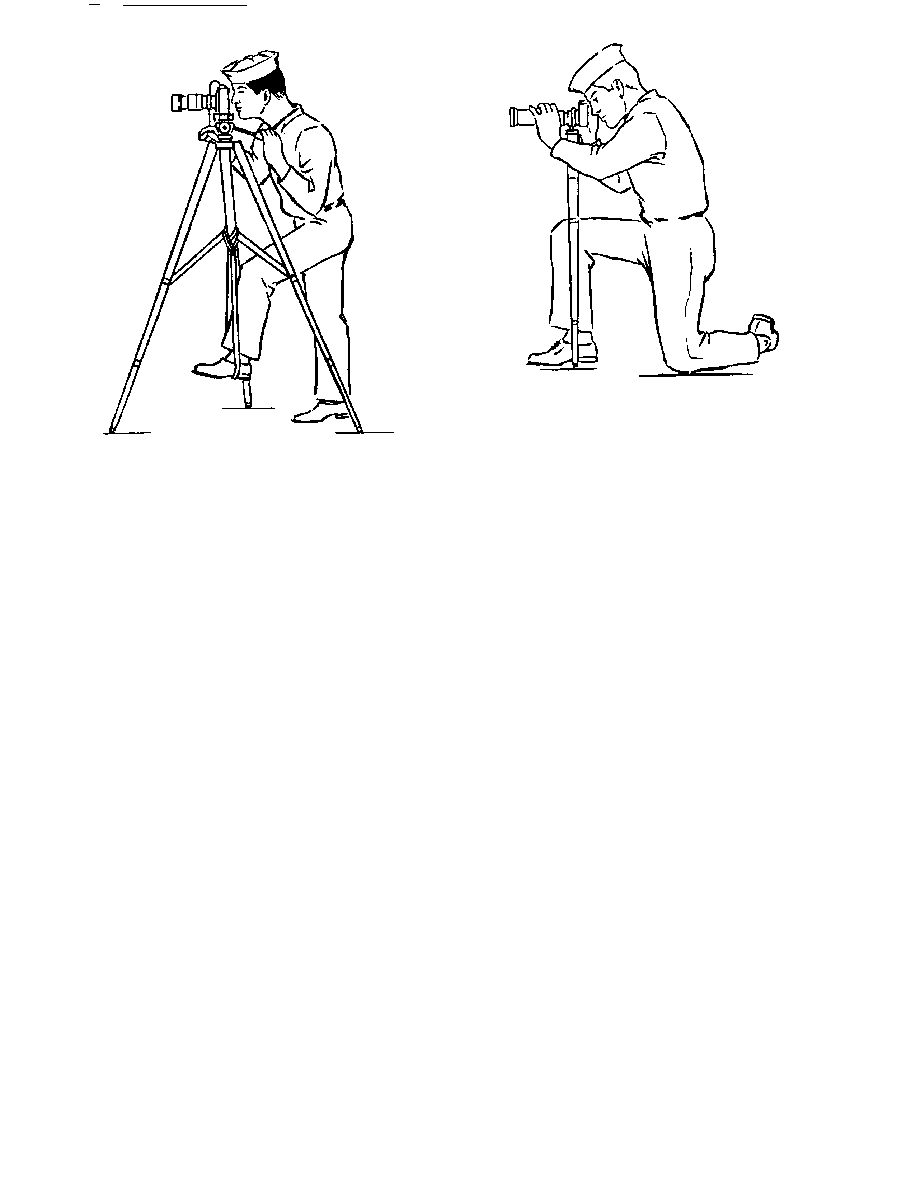
DOFMaster
for Windows
On-line
Depth of Field
Calculator
DOFMaster for Mobile Devices
On-line
Depth of Field
Table
Hyperfocal
Distance Chart
Articles
FAQ
Recommended
Books
Support
Contact
Links
Home
for Windows
On-line
Depth of Field
Calculator
DOFMaster for Mobile Devices
On-line
Depth of Field
Table
Hyperfocal
Distance Chart
Articles
FAQ
Recommended
Books
Support
Contact
Links
Home
As an Amazon Associate I earn from qualifying purchases.
![]()
steady for location work when a tripod is too bulky or
difficult to use; however, the use of a monopod is not
advisable when using large, heavy cameras or when
Standing or kneeling with a monopod braced against
your body or leg provides a camera the extra support and
steadiness required for it to be an effective tool (fig. 5-4).
A camera clamp has a mount that screws into the tripod
hole or socket on the camera and has jaws that can be
clamped to a convenient object. Camera support clamps
can be attached to furniture, doors, posts, fences, and
other firm anchor points. There are even clamps with
suction cups for mounting cameras on smooth, flat
surfaces, such as a window.
on the photographer's ability to see as the camera sees
because a photograph does not reproduce a scene quite
the way we see it. The camera sees and records only a
two dimensions, frames it, and freezes it. It does not
discriminate as we do. When we look at a scene we
selectively see only the important elements and more or
less ignore the rest. A camera, on the other hand, sees all
the details within the field of view. This is the reason
Backgrounds may be cluttered with objects we do not
remember, our subjects are smaller in the frame or less
striking than we recall, or the entire scene may lack
significance and life.
basic principles of composition. The way you arrange
the elements of a scene within a picture, catch the
viewer's attention, please the eye, or make a clear
statement are all qualities of good composition. By
developing photographic composition skills, you can
produce photographs that suggest movement, life,
depth, shape, and form, recreating the impact of the
original scene.
time you take a picture, look all around within the
recorded and how it relates to the overall composition.
Basic Photography Course

As an Amazon Associate I earn from qualifying purchases.
WWW.DOFMASTER.COM
© 2006 Don Fleming. All rights reserved.
© 2006 Don Fleming. All rights reserved.